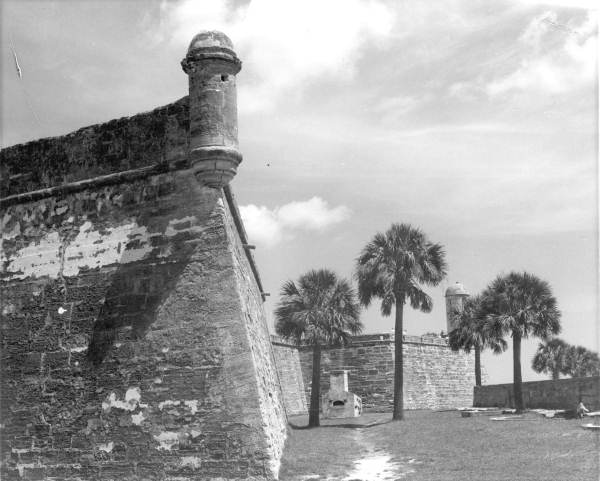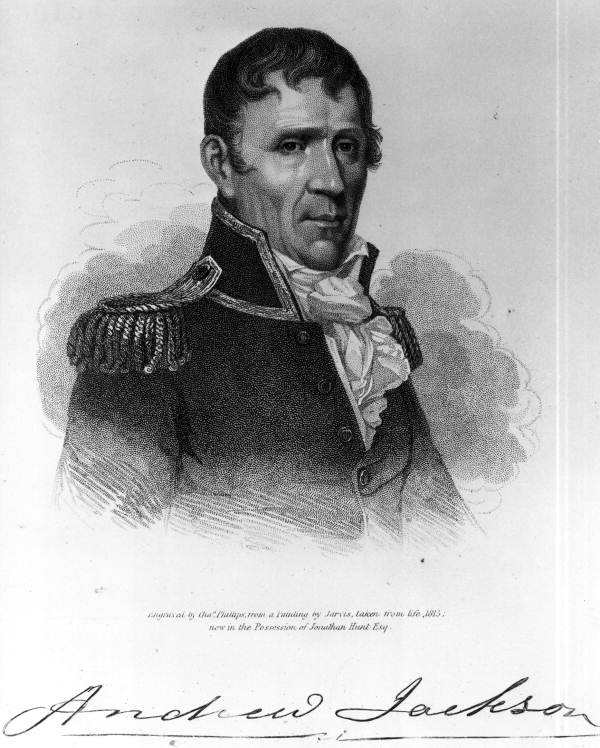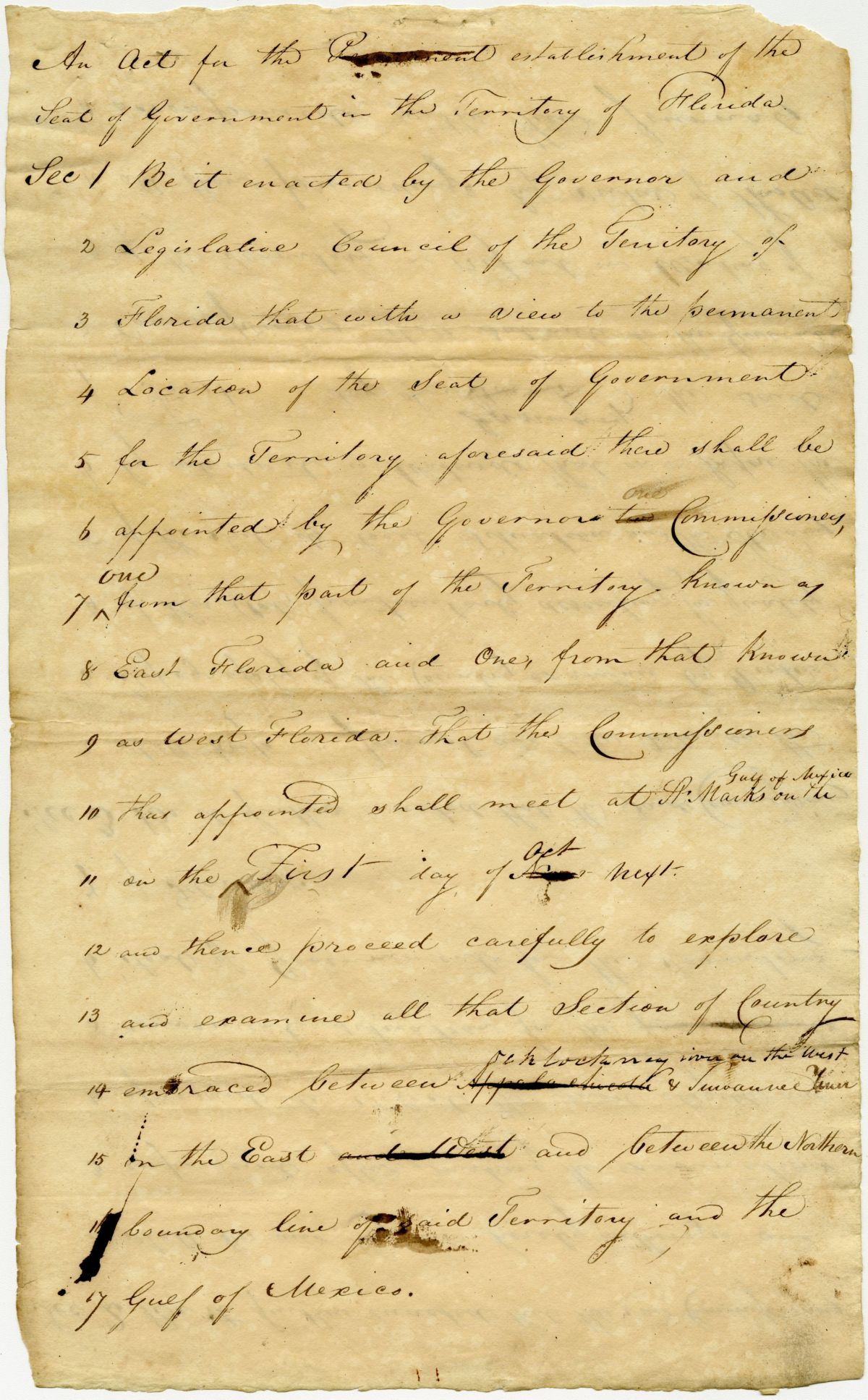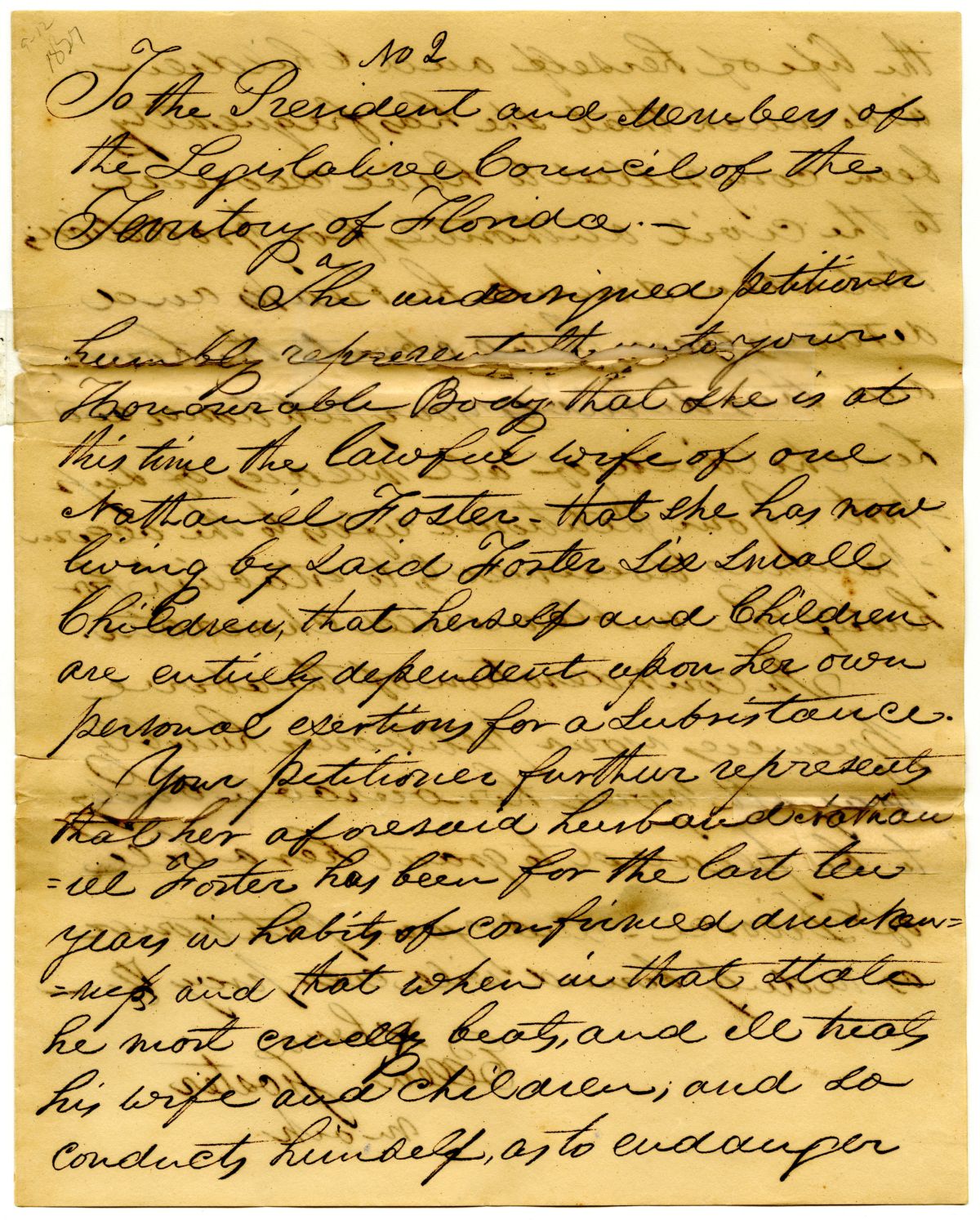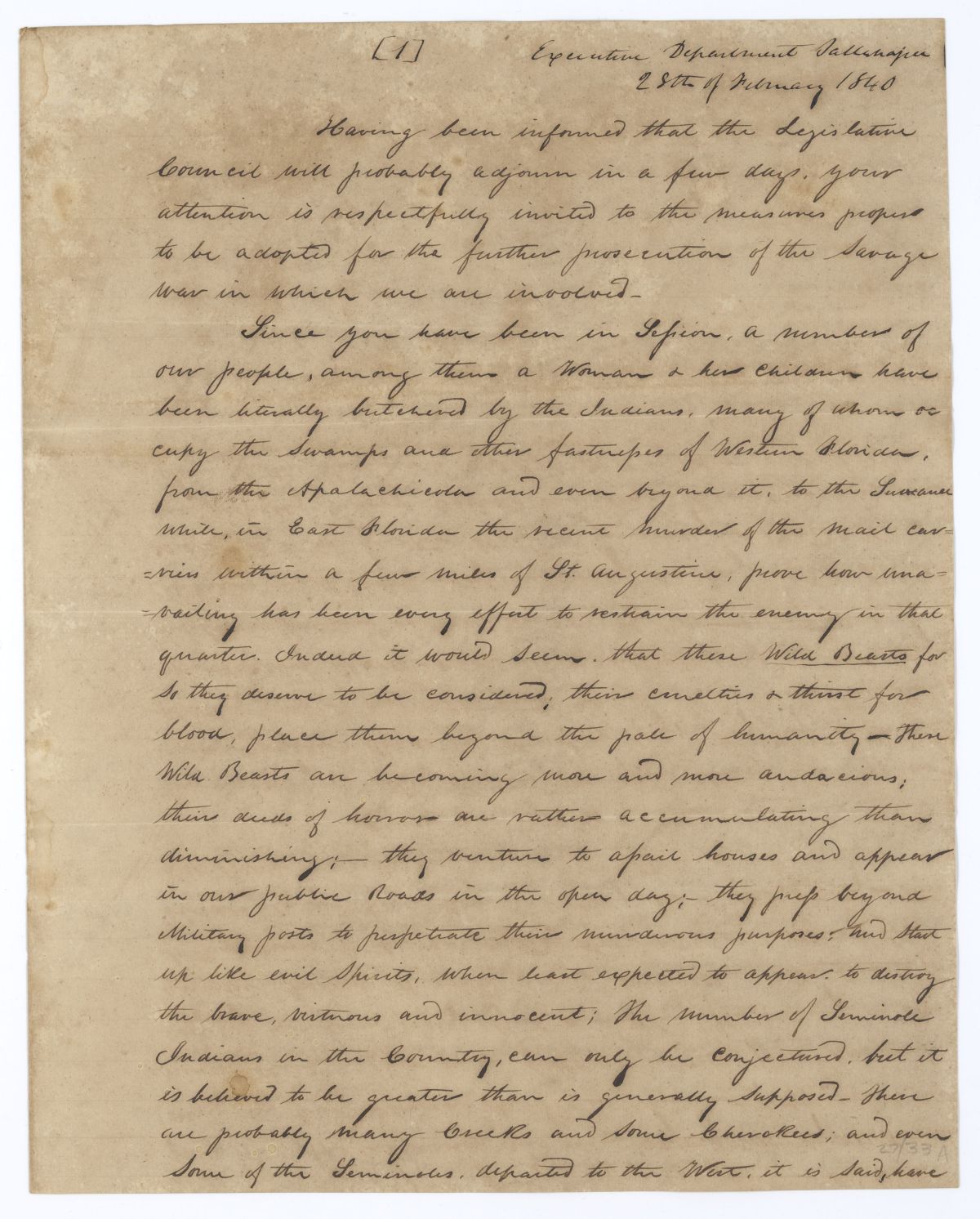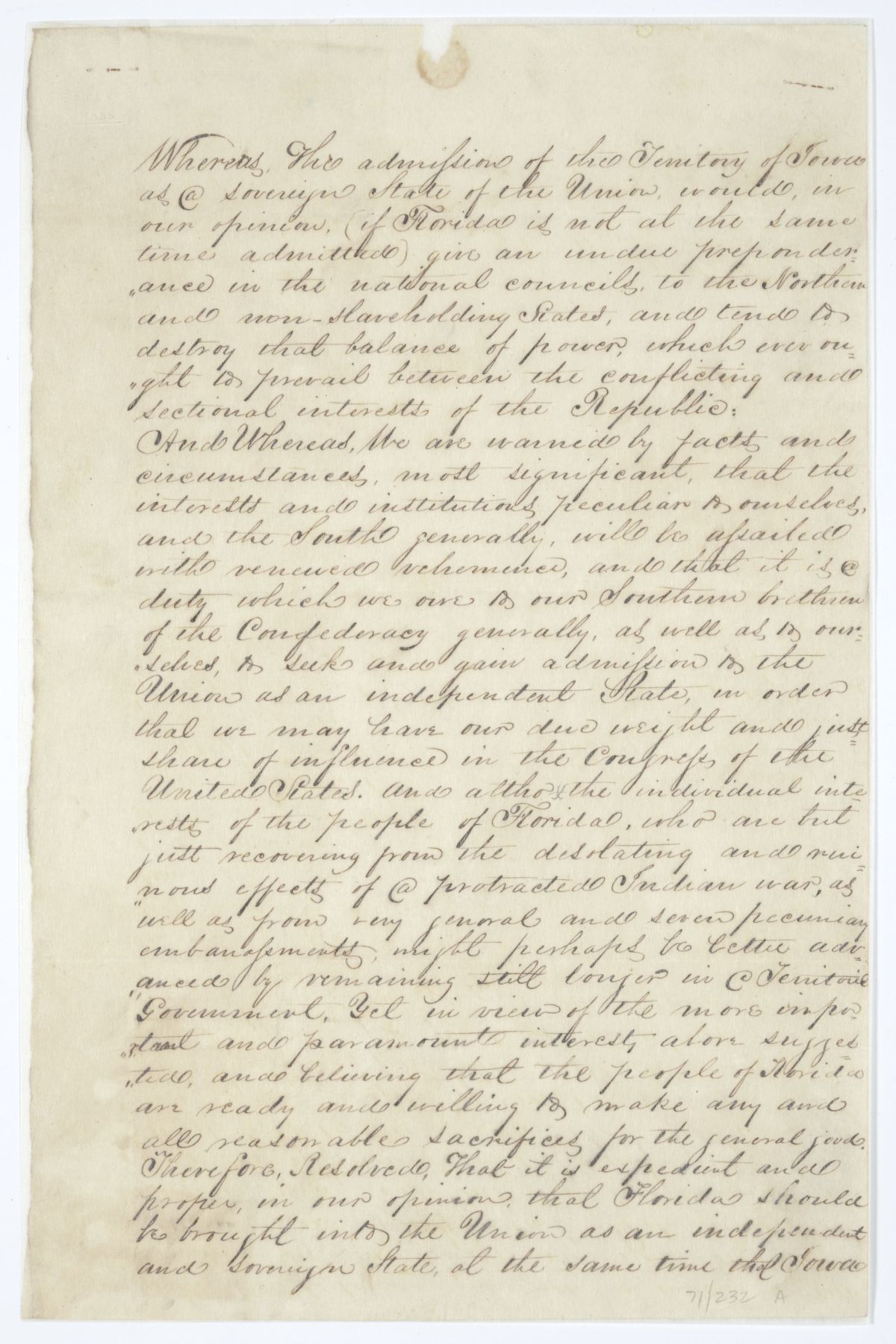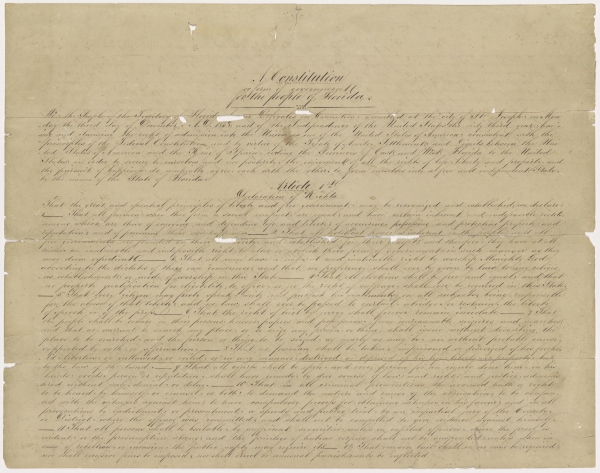Description of previous item
Description of next item
The Florida Territorial Legislative Council
Published June 6, 2022 by Florida Memory
Florida's Territorial Legislative Council produced many documents that provide a window into the history of Florida's territorial government from the perspective of the people who were involved. Without these primary source documents, the story of Florida's early history would not be complete. This rich collection of records is available online for all researchers to browse in full. However, it is essential to know a little of the historical context the Territorial Legislative Council existed in to best understand its records.
Before Florida became a United States territory and the Legislative Council shaped its history, it was under the dominion of a powerful European empire. During the 16th century, the vast Spanish Empire spread from Europe and the Americas to the Philippines in the Pacific. The land now known as Florida was home to Native American groups, such as the Apalachee and the Timucua, long before Spain became the first European power to establish a permanent presence by establishing the city of St. Augustine. Spain also founded Pensacola and built a series of missions throughout north Florida. For a brief period after the Seven Years War, the British gained control of Florida. After the American Revolutionary War, Spain regained control of Florida. Compared with the rest of their domain, Florida remained a quiet frontier.
The Spanish Empire experienced rapid decline during the second Spanish period in Florida. Amidst the tumult of the Napoleonic Wars in Europe, revolutions broke out throughout many Spanish colonies. As Spain faced wars in both the Americas and in Europe, it was unable to defend its sparsely populated frontier colonies. The young United States took advantage of Spain's weakness to expand into Florida. In 1818, Andrew Jackson invaded Spanish Florida, ostensibly to thwart Native American incursions into the southern U.S., in what would become known as the First Seminole War. Unable to successfully defend its territory, Spain ceded Florida to the United States as part of the Adams-Onis Treaty (1819). The U.S. formally took control of Florida in 1821.
After the transfer of power, Congress passed an organic act, "An Act for the Establishment of a Territorial Government in Florida," which served as the constitution of the territory, stipulated that Florida would be governed by a Legislative Council and governor appointed by the federal government, and established court systems. Initially, the federal government appointed members of the Legislative Council. In time, citizens of the territory gained the right to elect their own representatives and public officers. In 1838, the Legislative Council became a bicameral body with a House and a Senate.
One of the early challenges for the Legislative Council was the simple act of meeting. Originally, members of the Legislative Council rotated between meeting at Pensacola and St. Augustine. The difficulty of travelling between the two locations compelled the members of the Legislative Council to draft an act calling for the appointment of commissioners to select a new location for the capital. In 1824, a new capital was established in a more central location, Tallahassee.
The Florida Territorial Legislative Council established the laws that governed the territory. Much of its work also involved laying the groundwork for the territory to become a state. It sanctioned the construction of roads and other infrastructure, granted town charters, issued articles of incorporation to private businesses, answered petitions, mediated disputes and attended to other important issues as they arose.
As pioneers poured into Florida from other parts of the United States, they increasingly came into conflict with the Native Americans who had lived there for centuries. Coinciding with a national policy of Indian removal under President Andrew Jackson, the Legislative Council and the governors of Florida contributed to the U.S. war effort during the Second Seminole War from 1835-1842. Both territorial militia and federal troops fought in the war. The records of the Florida Territorial Legislative Council contain numerous accounts of the Second Seminole War, such as the letter below documenting a raid on the Apalachicola River.
As Florida continued to grow, the territory's leaders and people began to look toward admission to the Union as a full state. Among the requirements for statehood was a constitution, and in 1838, a constitutional convention met in the town of St. Joseph to draft a constitution for Florida's state government. Florida applied for statehood during a time when the issue of slavery caused deep sectional divisions in the United States. As part of an attempt to balance the interests of both slaveholding and free states, the Legislative Council issued a resolution calling for Florida to become a state at the same time as the Territory of Iowa. In this manner, the balance between the number of slaveholding and free states would be preserved. The debate over slavery only intensified as Florida approached statehood, as illustrated in the infamous case of Jonathan Walker in which the abolitionist was tried and imprisoned in Pensacola and branded on his hand with "SS" (slave stealer) for attempting to free seven enslaved persons. Florida entered the Union as the 27th state in 1845.
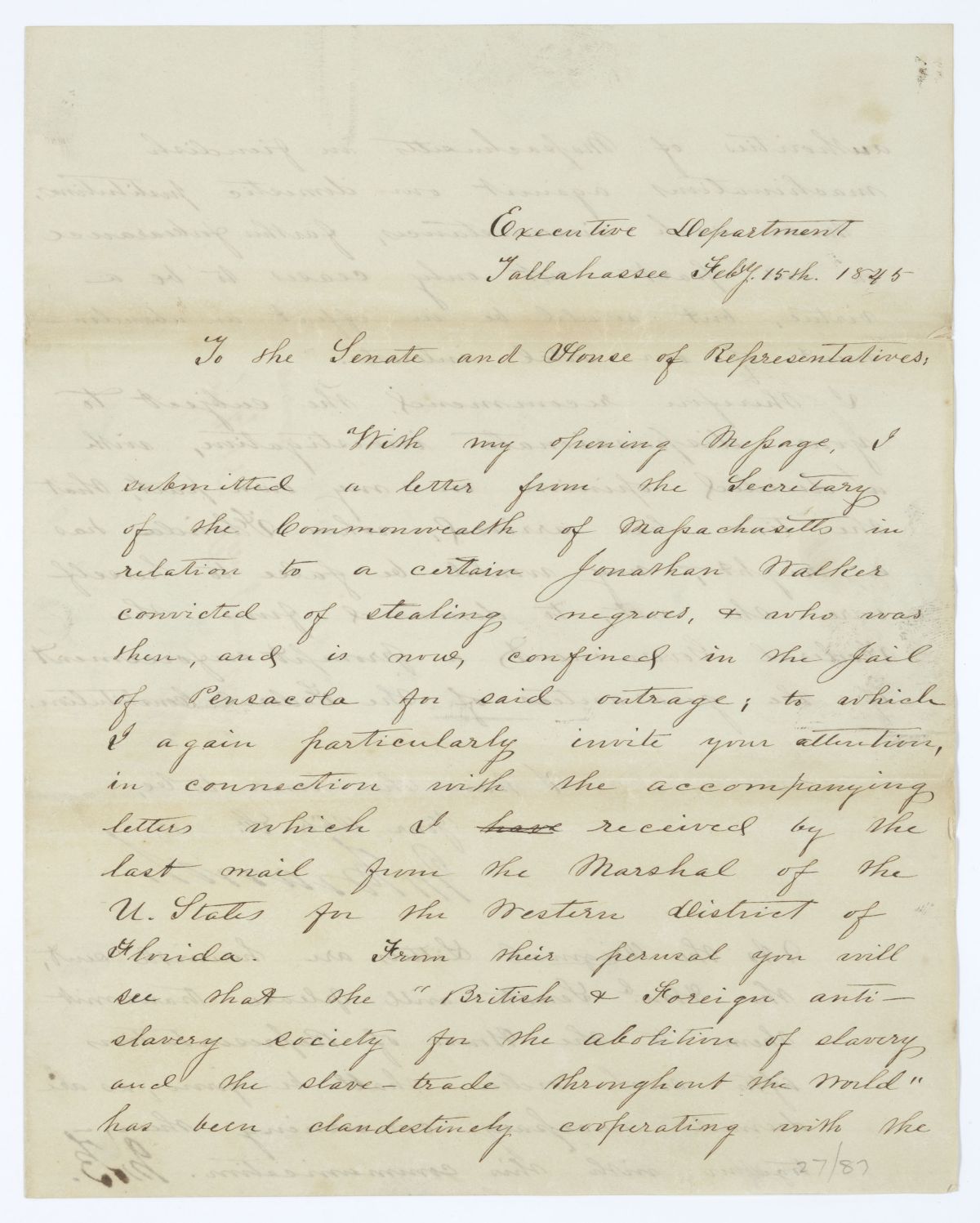
Letter from Governor John Branch to the Territorial Legislative Council Regarding the Case of Jonathan Walker, 1845
The records of the Florida Territorial Legislative Council contain extensive details about the history and government of early Florida and are available online on Florida Memory. To browse these records, simply click the link below. To search the records, click the "Index of Records" link on the menu to the left on the main page. The index consists of subject terms that can be searched in real time as you enter terms into the search field. For instance, searching the term "petition" will bring up records from the collection that contain the word "petition" in the subject terms or the title.
Records of the Florida Territorial Legislative Council
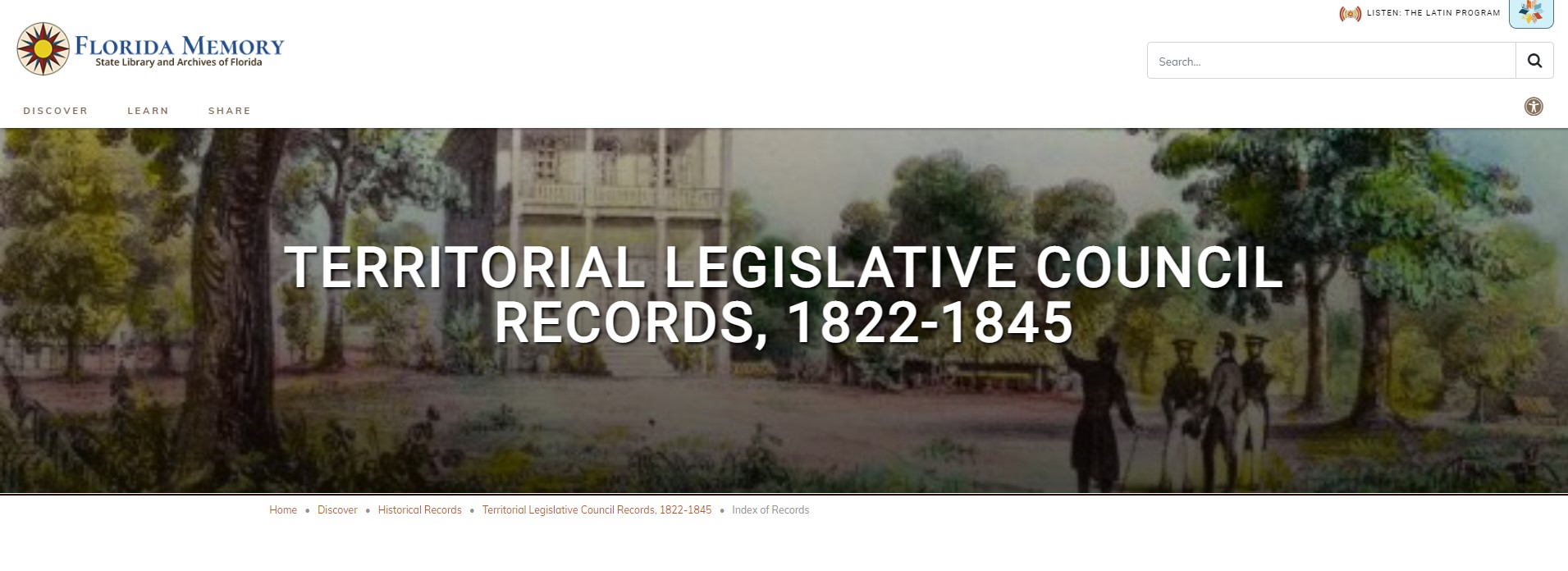
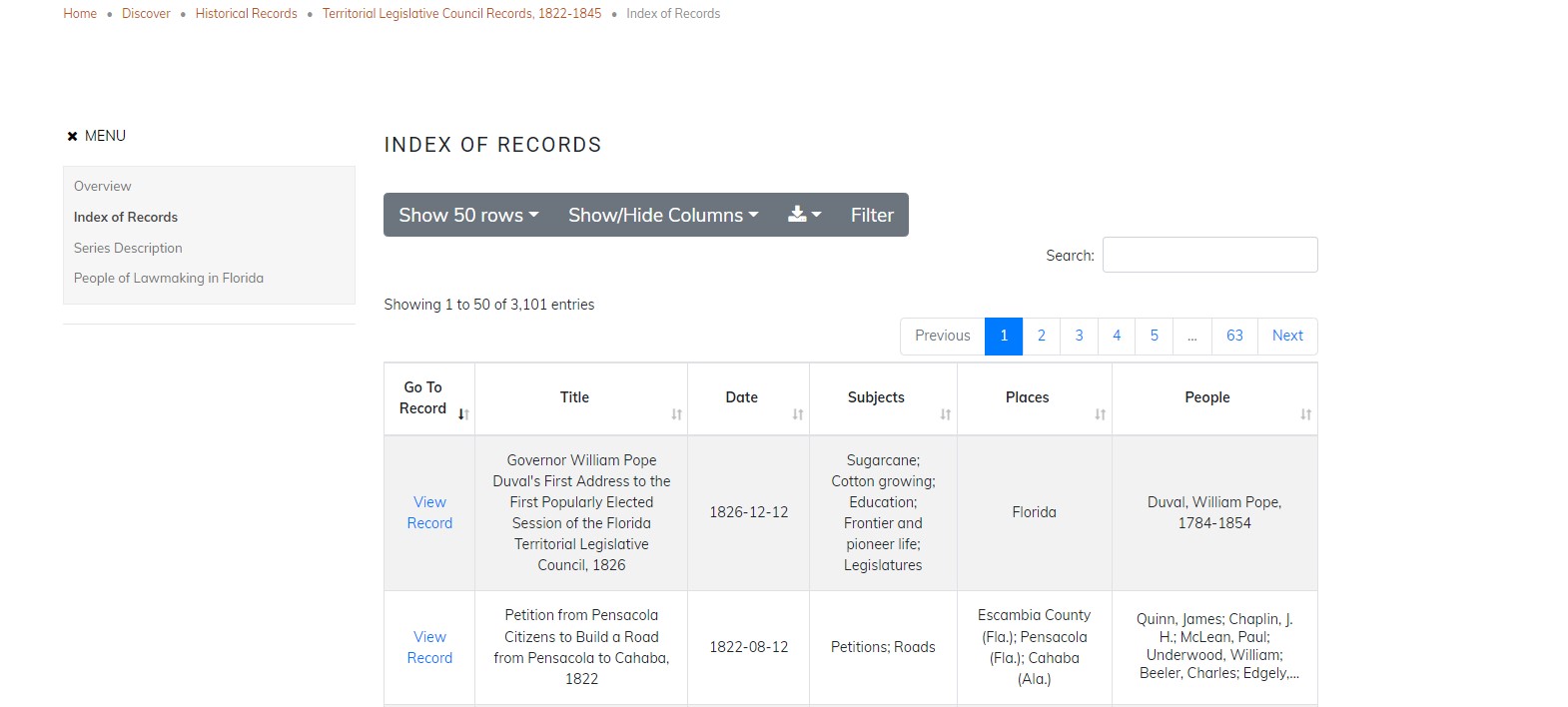
Cite This Article
Chicago Manual of Style
(17th Edition)Florida Memory. "The Florida Territorial Legislative Council." Floridiana, 2022. https://www.floridamemory.com/items/show/350754.
MLA
(9th Edition)Florida Memory. "The Florida Territorial Legislative Council." Floridiana, 2022, https://www.floridamemory.com/items/show/350754. Accessed December 5, 2025.
APA
(7th Edition)Florida Memory. (2022, June 6). The Florida Territorial Legislative Council. Floridiana. Retrieved from https://www.floridamemory.com/items/show/350754

 Listen: The Assorted Selections Program
Listen: The Assorted Selections Program